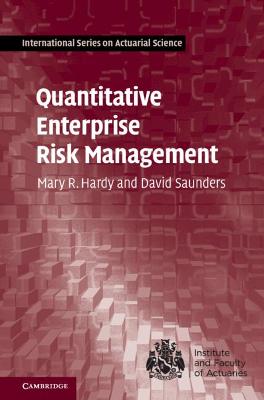International Series on Actuarial Science
4 total works
Actuarial Mathematics for Life Contingent Risks
by David C. M. Dickson, Mary R. Hardy, and Howard R. Waters
Published 24 September 2009
How can actuaries best equip themselves for the products and risk structures of the future? Using the powerful framework of multiple state models, three leaders in actuarial science give a modern perspective on life contingencies, and develop and demonstrate a theory that can be adapted to changing products and technologies. The book begins traditionally, covering actuarial models and theory, and emphasizing practical applications using computational techniques. The authors then develop a more contemporary outlook, introducing multiple state models, emerging cash flows and embedded options. Using spreadsheet-style software, the book presents large-scale, realistic examples. Over 150 exercises and solutions teach skills in simulation and projection through computational practice. Balancing rigour with intuition, and emphasising applications, this text is ideal for university courses, but also for individuals preparing for professional actuarial exams and qualified actuaries wishing to freshen up their skills.
The focus of this book is on the two major areas of risk theory: aggregate claims distributions and ruin theory. For aggregate claims distributions, detailed descriptions are given of recursive techniques that can be used in the individual and collective risk models. For the collective model, the book discusses different classes of counting distribution, and presents recursion schemes for probability functions and moments. For the individual model, the book illustrates the three most commonly applied techniques. Beyond the classical topics in ruin theory, this new edition features an expanded section covering time of ruin problems, Gerber–Shiu functions, and the application of De Vylder approximations. Suitable for a first course in insurance risk theory and extensively classroom tested, the book is accessible to readers with a solid understanding of basic probability. Numerous worked examples are included and each chapter concludes with exercises for which complete solutions are provided.
Solutions Manual for Actuarial Mathematics for Life Contingent Risks
by David C Dickson, Mary R. Hardy, and Howard R. Waters
Published 26 March 2012
This must-have manual provides solutions to all exercises in Dickson, Hardy and Waters' Actuarial Mathematics for Life Contingent Risks, the groundbreaking text on the modern mathematics of life insurance that is the required reading for the SOA Exam MLC and also covers more or less the whole syllabus for the UK Subject CT5 exam. The more than 150 exercises are designed to teach skills in simulation and projection through computational practice, and the solutions are written to give insight as well as exam preparation. Companion spreadsheets are available for free download to show implementation of computational methods.
This well-balanced introduction to enterprise risk management integrates quantitative and qualitative approaches and motivates key mathematical and statistical methods with abundant real-world cases - both successes and failures. Worked examples and end-of-chapter exercises support readers in consolidating what they learn. The mathematical level, which is suitable for graduate and senior undergraduate students in quantitative programs, is pitched to give readers a solid understanding of the concepts and principles involved, without diving too deeply into more complex theory. To reveal the connections between different topics, and their relevance to the real world, the presentation has a coherent narrative flow, from risk governance, through risk identification, risk modelling, and risk mitigation, capped off with holistic topics - regulation, behavioural biases, and crisis management - that influence the whole structure of ERM. The result is a text and reference that is ideal for graduate and senior undergraduate students, risk managers in industry, and anyone preparing for ERM actuarial exams.

